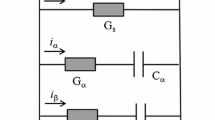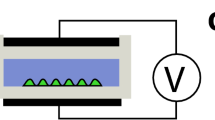Abstract
A study is conducted to determine whether the extracellular fluid (ECF) volume fraction and equivalent dielectric constant of the cell membrane εm, derived from the dielectric properties of the human body can track the progression of surgical tissue injury. Frequency-dependent dielectric constants and electrical conductivities of body segments are obtained at surgical (trunk) and non-surgical sites (arm and leg) from five patients who have undergone oesophageal resections, before and at the end of surgery and on the day after the operation. The ECF volume fraction and the equivalent εm of body segments are estimated by fitting the dielectric data for body segments to the cell suspension model incorporating fat tissue, and their time-course changes are compared between body segments. By the day after the operation, the estimated ECF volume fraction has increased in all body segments compared with that before surgery, by 0.13 in the arm, 0.16 in the trunk and 0.14 in the leg (p<0.05), indicating postoperative fluid accumulation in the extracellular space. In contrast, the estimated equivalent εm shows a different time course between body segments on the day after the operation, characterised by a higher change ratio of εm of the trunk (1.34±0.66, p<0.05), from that of the arm (0.66±0.34) and leg (0.61±0.11). The results suggest that the equivalent εm of a body segment at a surgical site can track pathophysiological cell changes following surgical tissue injury.
Similar content being viewed by others
References
Jaffrin, M. Y., Maasrani, M., Gourrier, A. Le. andBoudailliez, B. (1997): ‘Extra- and intracellular volume monitoring by impedance during haemodialysis using Cole-Cole extrapolation’,Med. Biol. Eng. Comput.,35, pp. 266–270
Lowell, J. A., Schifferdecker, C., Driscoll, D. F., Benotti, P. N. andBistrian, B. R. (1990): ‘Postoperative fluid overload: not a benign problem’,Crit. Care Med.,18, pp. 728–733
McAdams, E. T. andJossinet, J. (1996): ‘Problems in equivalent circuit modeling of the electrical properties of biological tissues’,Bioelectrochem. Bioenerg.,40, pp. 147–152
Noshiro, M., Morimoto, T., Nagao, H. andMatsuda, H. (1993): ‘Electrical impedance in the lower limbs of patients with Duchenne muscular dystrophy: a preliminary study’,Med. Biol. Eng. Comput.,31, pp. 97–102
Organ, L. W., Bradham, G. B., Gore, D. T. andLozier, S. L. (1994): ‘Segmental bioelectrical impedance analysis: theory and application of a new technique’,J. Appl. Physiol.,77, pp. 98–112
Paulsen, K. D., Osterman, K. S. andHoopes, P. J. (1999): ‘In vivo electrical impedance spectroscopic monitoring of the progression of radiation-induced tissue injury’,Radiat. Res.,152, pp. 41–50
Rigaud, B., Morucci, J.-P. andChauveau, N. (1996): ‘Bioelectrical impedance techniques in medicine. part I: Bioimpedance measurement. second section: impedance spectrometry’,Crit. Rev. Biomed. Eng.,24, pp. 257–351
Tatara, T. andTsuzaki, K. (1998): ‘Segmental bioelectrical impedance analysis improves the prediction for extracellular water volume changes during abdominal surgery’,Crit. Care Med.,26, pp. 470–476
Tatara, T. andTsuzaki, K. (2000): ‘Derivation of extracellular fluid volume fraction and equivalent dielectric constant of the cell membrane from dielectric properties of the human body. Part 1: Incorporation of fat tissue into cell suspension model in the arm’,Med. Biol. Eng. Comput.,38, pp. 377–384
Tonnesen, A. S. (1990): ‘Crystalloids and colloids’ inMiller, R. D. (Ed.): ‘Anesthesia’ (Churchill Livingstone, New York), pp. 1439–1465
Yurt, R. W. (1988): ‘Chemical mediators’ inShires, G. T. (Ed.): ‘Fluids, electrolytes, and acid bases’ (Churchill Livingstone, New York), pp. 73–89
Author information
Authors and Affiliations
Corresponding author
Rights and permissions
About this article
Cite this article
Tatara, T., Tsuzaki, K. Derivation of extracellular fluid volume fraction and equivalent dielectric constant of the cell membrane from dielectric properties of the human body. Part 2: A preliminary study for tracking the progression of surgical tissue injury. Med. Biol. Eng. Comput. 38, 384–389 (2000). https://doi.org/10.1007/BF02345006
Received:
Accepted:
Issue Date:
DOI: https://doi.org/10.1007/BF02345006




